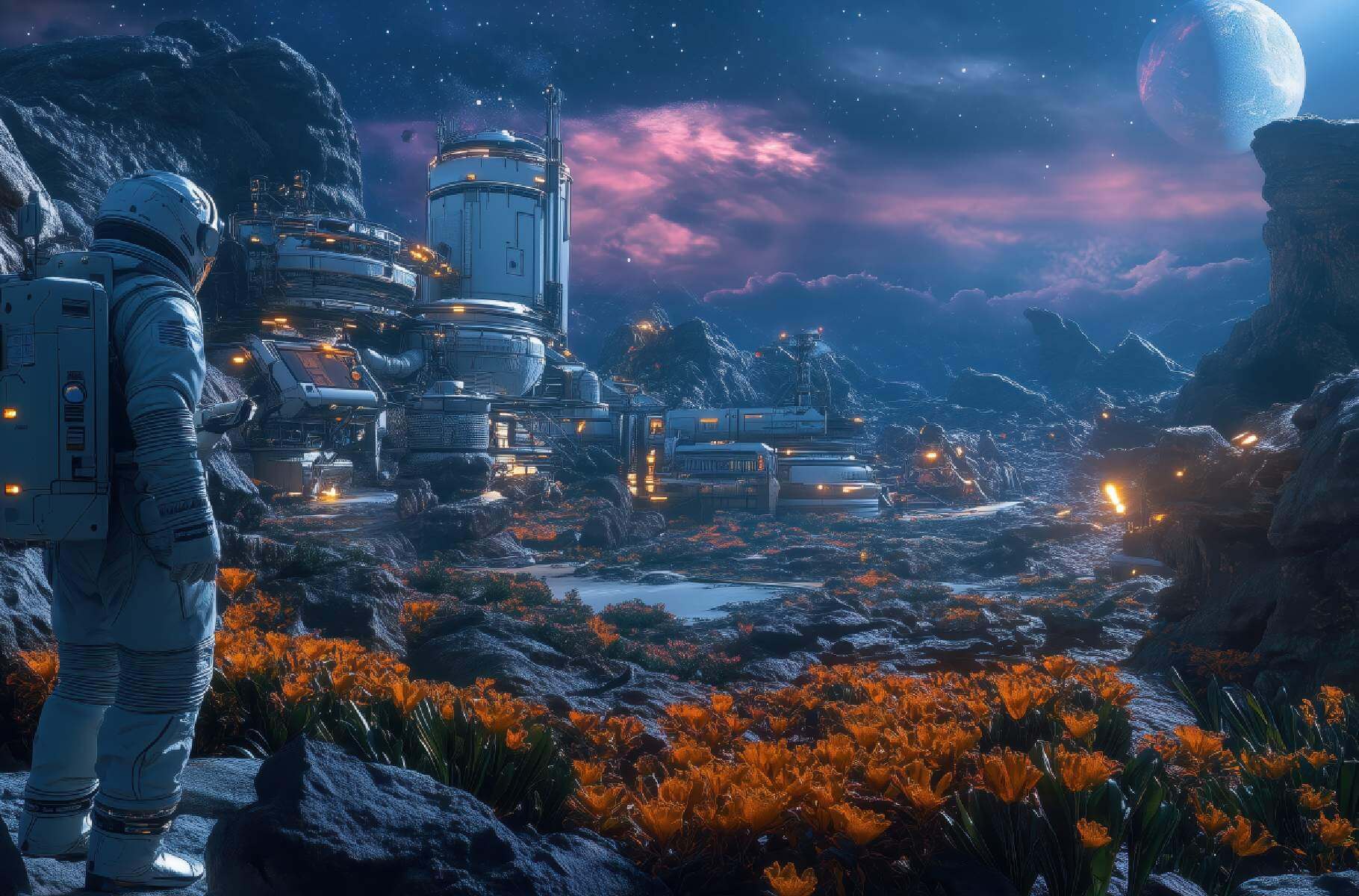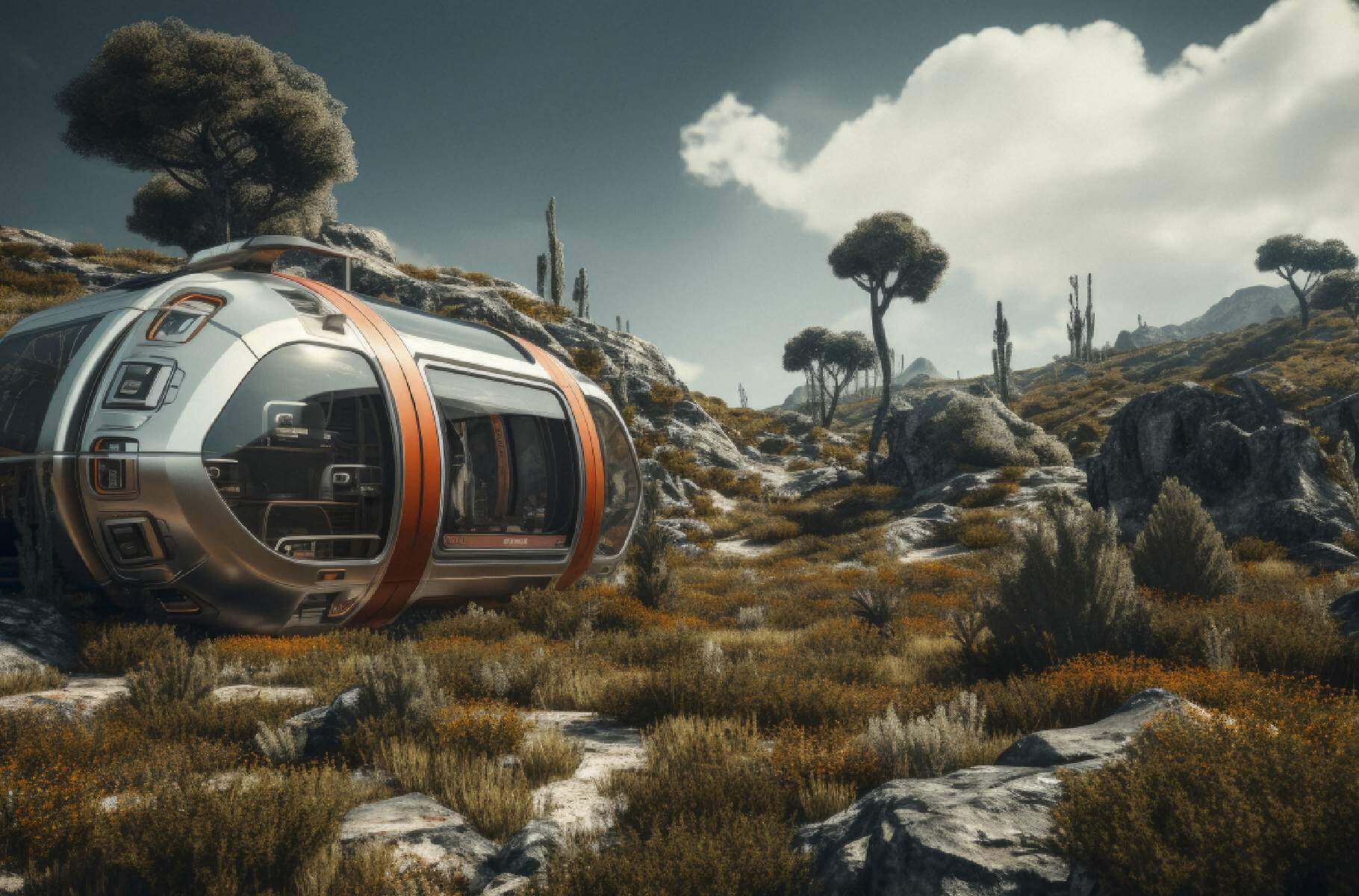Understanding how to scale environmental art is crucial for developing expansive game worlds. From asset management to immersive storytelling, this blog will guide you through the essential strategies and techniques to create seamless, engaging environments that resonate with players.
In an era where player expectations have become as vast and complex as the game worlds, game art production has transformed from a supporting element to the heartbeat of interactive storytelling. The days of static, disconnected landscapes are over. Today’s players demand living, breathing universes that feel as dynamic and nuanced as reality.
Consider the seismic shift: Where games were once sold based on gameplay mechanics, now they compete on their worlds’ depth, authenticity, and emotional resonance. This is more than just an artistic challenge. A strategic imperative directly impacts your studio’s market positioning, player retention, and bottom line.
The question is no longer whether you can create a large-scale game world but whether you can create a world so compelling that players forget they’re playing a game.
Scaling environmental art successfully requires a combination of technical and creative strategies. The following best practices can help developers achieve their goals in large-scale game development:
Procedural generation has emerged as a game-changing technology in environmental art creation, offering scalable game art solutions for developers. By automating the creation of certain elements, procedural generation saves time while increasing the variety of content. Instead of manually creating every tree, rock, or building, developers can now use intelligent tools that automatically generate unique environments. This means:
However, successful procedural generation is not about replacing human creativity but augmenting it. Good game design uses clear rules and artistic direction. This makes computer-generated worlds feel natural and engaging.
| Benefit | Description | Key Impact |
| Infinite Variety | PCG generates limitless unique content, offering fresh experiences in every playthrough. | Enhances replayability and player engagement. |
| Reduced Development Time | Automates asset creation, significantly cutting down on manual efforts. | Lowers cost and enables smaller teams to deliver high-quality games. |
| Diverse Environments | Creates varied landscapes and structures that suit different gameplay styles. | Enriches gaming experiences with adaptable settings. |
| Improved Player Engagement | Delivers unpredictable and unique content, fostering discovery and excitement. | Boosts immersion and player satisfaction. |
| Streamlined Development | Algorithms allow for rapid iteration and experimentation with game elements. | Increases efficiency and flexibility in the development process. |
Benefits Of Procedural Content Generation (Pcg) In Games
Using modular assets helps streamline the production process and maintain consistency across large areas. This approach is fundamentally about creating a comprehensive library of adaptable building blocks that can be combined and blended to generate diverse and complicated environments.
Think of it like a sophisticated digital LEGO set; each asset is designed to connect effortlessly with others. By adding unique details and variations to modular assets, developers can create environments that feel both expansive and rich with detail. This demands:
The ultimate goal is to create a system that allows maximum creative flexibility while maintaining high-quality standards and efficient production pipelines.
As game worlds expand in complexity, performance optimization becomes increasingly critical. Modern environmental artists must adopt sustainable game art practices, thinking like creative professionals and technical engineers, to balance visual fidelity with computational efficiency.
This goes beyond simple graphic settings. It’s about creating intelligent rendering systems that dynamically adapt to different hardware capabilities, stream assets, and maintain visual quality without compromising performance. Key strategies include:
The most successful studios treat performance optimization as a creative challenge, not just a technical constraint.
Environmental design in games has transcended its original role as a mere visual decoration. In modern games, game concept art serves as the foundation for creating environments that are not just visually striking but also narratively rich. Every visual element in today’s most sophisticated games is a potential storytelling tool. Environments are no longer passive backdrops but active narrative participants, communicating complex emotional and historical contexts.
This approach requires a deep understanding of visual storytelling. An abandoned building isn’t just a collection of textures and geometry—it’s a narrative fragment that can communicate history, conflict, and emotion without a single spoken word. Successful environmental design involves:

The complexity of modern environmental art scaling demands a radical reimagining of team structures. The days of artists working in isolation are long gone. Today’s most successful studios foster cross-disciplinary collaboration, breaking traditional departmental barriers.
This means creating environments where artists, designers, programmers, and narrative teams work not just alongside each other but truly together. It requires:
Creating an immersive game environment design is like building entire universes from scratch. As game environments become more complex, developers face challenges beyond simply making things look pretty. These challenges test the development teams’ creativity, technical skills, and strategic thinking.
The challenge of visual cohesion becomes more prominent as the game world expands. For projects requiring AAA game art, developers must create a connected world while offering a sense of diversity and uniqueness across different regions. A unified aesthetic helps maintain the game’s artistic integrity and ensures the world doesn’t feel disjointed. Achieving this requires:
Developments must strike a delicate balance between detail and performance as environments grow. High-quality, detailed assets enhance player immersion but can also be resource-heavy, affecting frame rates and overall performance. By applying sustainable game art practices, developers can optimize assets, carefully manage resources, and implement innovative techniques like procedural generation to ensure the game runs smoothly without compromising visual fidelity.
Creating a genuinely alive and immersive world is one of the most critical goals of environmental art. This means designing environments that respond to in-game events, such as dynamic weather systems, day-night cycles, and interactive elements. The challenge lies in ensuring these systems integrate seamlessly into the gameplay and enhance the player’s experience rather than detracting from it.
A large game world can feel empty or overwhelming if not designed with careful attention to how players perceive space and time. Developers must find ways to make large areas feel expansive without feeling devoid of content. Techniques such as incorporating varied elevations, verticality, and biome transitions help create a sense of distance and movement, adding depth to the environment. Game art production ensures these elements are effectively integrated, enhancing spatial and temporal immersion.

Efficient asset management is vital when scaling up environmental art. Developers often use modular assets—reusable elements like buildings, trees, or rocks—to speed up production and maintain consistency. However, relying too heavily on modular assets can result in a repetitive world that feels uninspired. Scalable game art solutions allow for the creation of diverse environments while maintaining efficiency, striking the right balance between modularity and uniqueness to keep the world fresh and engaging.
At Juego Studios, we don’t just understand these challenges—we’ve developed comprehensive game art services that transform them into opportunities. Our approach combines cutting-edge technological expertise with a deep understanding of interactive storytelling.
Our team of environmental artists and technical designers doesn’t just create assets; we engineer immersive worlds that push the boundaries of interactive experiences. By partnering with Juego, you’re gaining more than an art production team—you’re acquiring strategic allies committed to elevating your game’s visual narrative.
As game development evolves, environmental art outsourcing will play an increasingly pivotal role in defining player experiences. The studios that master the art of world-building—balancing technological innovation, artistic vision, and strategic thinking—will lead the next generation of interactive entertainment.
Creating consistent, high-quality game worlds is tough. Artists must maintain visual harmony across different environments, balance detailed graphics with smooth performance, and ensure each area feels authentic. They must create stunning, immersive landscapes while running smoothly on various gaming systems. Moreover, they must constantly innovate to push the boundaries of visual storytelling while working within technical constraints.
Environmental artists use powerful software like Unreal Engine and Unity to build game environments. Houdini helps create complex visual effects, while Substance Painter develops high-resolution textures. Multiple 3D modeling software packages complement these tools, allowing artists to design intricate, realistic game worlds with incredible detail. Advanced photogrammetry and scanning technologies are becoming increasingly important, enabling artists to capture real-world textures and details accurately.
Artists create comprehensive style guides that outline the project’s visual rules. They maintain constant communication between designers, developers, and stakeholders. By establishing a clear artistic direction from the start and consistently referencing their shared vision, teams can ensure every visual element feels cohesive and aligned. Regular art reviews and iterative feedback loops help maintain this consistency throughout the game’s development process.
Environmental artists require a blend of artistic talent and technical knowledge. They must understand storytelling through visual design, collaborate effectively with team members, and use complex 3D design tools. Strong creativity, technical skills, communication abilities, and a passion for creating immersive worlds are essential. Additionally, they must develop a keen understanding of environmental psychology and how visual design can subtly guide player emotions and experiences.
Environmental art rapidly advances with artificial intelligence, improved real-time rendering techniques, and more powerful game engines. These technologies enable artists to create more realistic, dynamic environments that respond to player actions. Games now feature incredibly detailed worlds that feel alive and reactive. The integration of machine learning is opening up new possibilities for procedural generation and adaptive environmental design.
Thematic concepts guide a game’s artistic vision, ensuring every environment supports the story’s mood. This might mean using gloomy colors and intimidating architecture in a dark fantasy game. These consistent design choices help create a believable, immersive world that enhances the player’s storytelling experience. Environmental artists must also consider cultural and historical influences that can add depth and authenticity to the game world’s visual narrative.
Developers use strategies like smooth biome transitions, varied terrain elevations, and procedural generation. By creating diverse landscapes with natural progression—shifting from forests to deserts, incorporating hills and valleys—they prevent monotony. Algorithmic content creation adds unique details that keep large worlds interesting. Furthermore, carefully placed environmental storytelling elements, such as ruins, wildlife, or subtle environmental hints, can make even the most expansive worlds feel rich and meaningful.